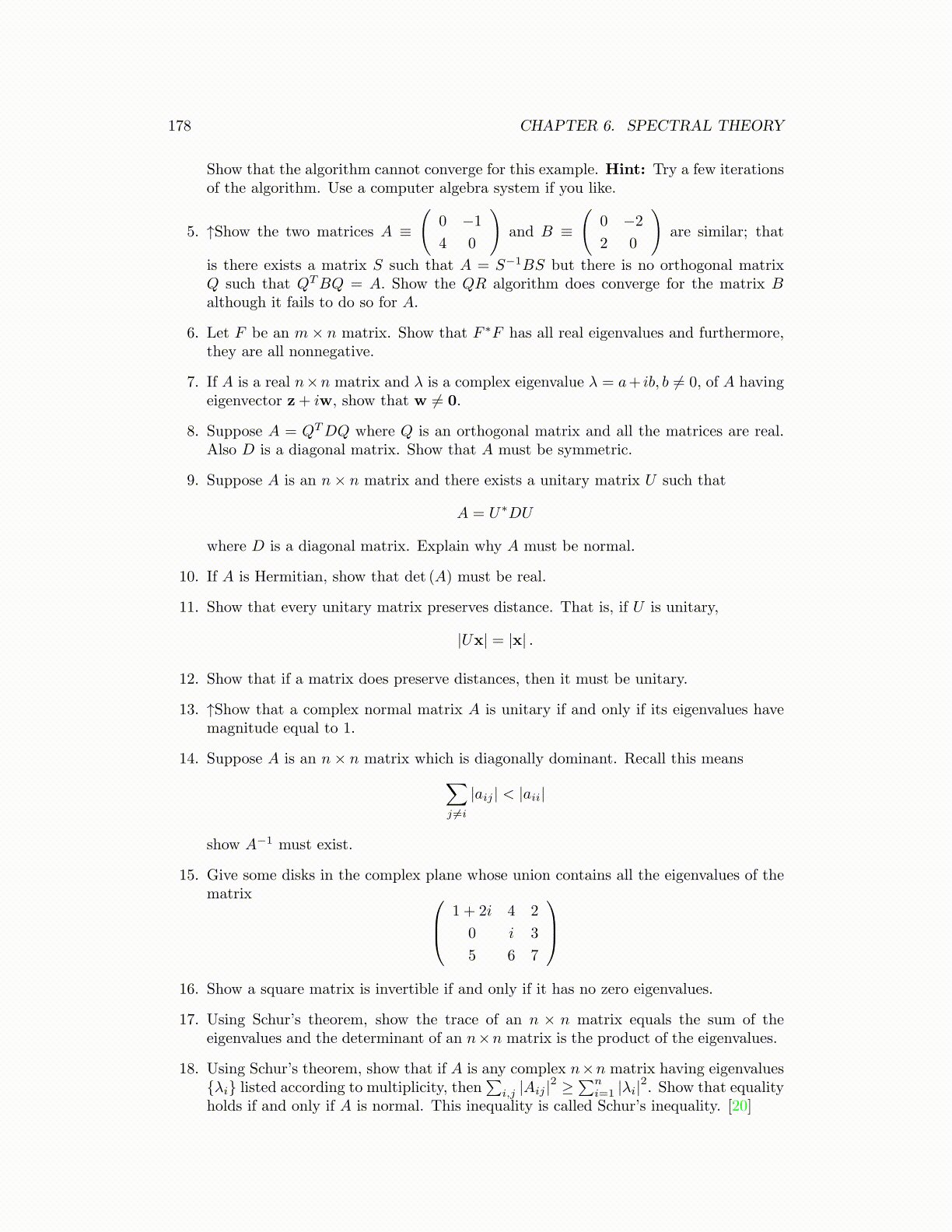
178 CHAPTER 6. SPECTRAL THEORY
Show that the algorithm cannot converge for this example. Hint: Try a few iterationsof the algorithm. Use a computer algebra system if you like.
5. ↑Show the two matrices A ≡
(0 −1
4 0
)and B ≡
(0 −2
2 0
)are similar; that
is there exists a matrix S such that A = S−1BS but there is no orthogonal matrixQ such that QTBQ = A. Show the QR algorithm does converge for the matrix Balthough it fails to do so for A.
6. Let F be an m× n matrix. Show that F ∗F has all real eigenvalues and furthermore,they are all nonnegative.
7. If A is a real n×n matrix and λ is a complex eigenvalue λ = a+ ib, b ̸= 0, of A havingeigenvector z+ iw, show that w ̸= 0.
8. Suppose A = QTDQ where Q is an orthogonal matrix and all the matrices are real.Also D is a diagonal matrix. Show that A must be symmetric.
9. Suppose A is an n× n matrix and there exists a unitary matrix U such that
A = U∗DU
where D is a diagonal matrix. Explain why A must be normal.
10. If A is Hermitian, show that det (A) must be real.
11. Show that every unitary matrix preserves distance. That is, if U is unitary,
|Ux| = |x| .
12. Show that if a matrix does preserve distances, then it must be unitary.
13. ↑Show that a complex normal matrix A is unitary if and only if its eigenvalues havemagnitude equal to 1.
14. Suppose A is an n× n matrix which is diagonally dominant. Recall this means∑j ̸=i
|aij | < |aii|
show A−1 must exist.
15. Give some disks in the complex plane whose union contains all the eigenvalues of thematrix 1 + 2i 4 2
0 i 3
5 6 7
16. Show a square matrix is invertible if and only if it has no zero eigenvalues.
17. Using Schur’s theorem, show the trace of an n × n matrix equals the sum of theeigenvalues and the determinant of an n×n matrix is the product of the eigenvalues.
18. Using Schur’s theorem, show that if A is any complex n×n matrix having eigenvalues{λi} listed according to multiplicity, then
∑i,j |Aij |2 ≥
∑ni=1 |λi|
2. Show that equality
holds if and only if A is normal. This inequality is called Schur’s inequality. [20]